Schulz/Forum 6 - Pojedyncze artykuły by Stanisław Rosiek

The experts and admirers of Schulz’s plastic art have long known about his design of a bookplate ... more The experts and admirers of Schulz’s plastic art have long known about his design of a bookplate of Ella and Jakub Schulz, the children of Izydor, Schulz’s elder brother, made probably in 1930. A sheet of paper with a pencil sketch was glued to carton most likely by Schulz himself and then framed. In such a form, hiding the reverse, it was preserved for several decades. In 2015 it became an object of auction. During examination, the sheet was separated from its original background and it turned out that on the reverse there are some unknown sketches by Schulz. One of them is a portrait of the writer’s mother, the other shows a homage of an elderly man to a young woman. Many known drawings by the writer have been made on sheets where both the reverse and the obverse have been used, which implies that, first, all the undersides of Schulz’s works must be carefully examined since they may hide his works that are still unknown, and second, that Schulz’s pencil sketches must be treated as material wholes. Fragments of his works cannot be reproduced separately from their visual milieu. It is also undesirable to frame and publish his drawings in isolation, according to conventional genre categories, such as “portrait,” “self-portrait” or “nude.” Their publication should make a documentary foundation which will allow us to reveal the principles of a mysterious coexistence of disparate motifs, optical perspectives, and emotional tonalities.
Schulz’s occasional graphic designs which made the margin of his art included also a vignette of ... more Schulz’s occasional graphic designs which made the margin of his art included also a vignette of the "Przegląd Podkarpacia", drawn in 1937 and used for the first time in the periodical’s 70th number, dated October 17. Before that the vignette had been composed of accidentally chosen type letters available at the printer’s. Schulz preferred a modern type but he did not use the printer’s resources. His vignette was an ink drawing, which guaranteed him maximum liberty. The artist combined a picture of an oil well and a refinery with a letter logo. The first letter “P” was of a double size so that it belonged to both title words placed one under the other. The letters was close enough in style to art deco, yet the whole vignette did not follow any particular schema. The last number of the "Przegląd Podkarpacia" with Schulz’s vignette was published on July 23, 1939.

“Schulz? I’ve written all about him,” Artur Sandauer allegedly declared in the 1970s.
Still, the ... more “Schulz? I’ve written all about him,” Artur Sandauer allegedly declared in the 1970s.
Still, the critic did not put Schulz under lock and key, and no one else did later.
Although the writer’s work has provoked hundreds of comments and interpretations, no one has found a key to open all the doors in his world, since he is always “elsewhere,” escaping his exegetes. That, however, should not discourage us from making new (private, idiosyncratic, and risky) attempts at interpretation. The reader will find some in the present issue. But there is also another way full of adventures – that of searches all over the world and archival research, which also promises success. The present issue includes an unpublished essay by Schulz on the works of the Jewish artist Maurycy (Ephraim Moses) Lilien, and a short review of an exhibition of Feliks Lachowicz. Besides, Schulz’s unknown pencil sketch, found on the underside of his well-knownsketch of a bookplate for Ella and Jakub Schulz, has been presented, as well as Schulz-the typographer. The introduction concludes with an appeal to visit Jerzy Ficowski’s archive. It certainly contains many unexplored traces and possibly a key to some door to Schulz’s world.
Schulz/Forum 1 – Pojedyncze teksty by Stanisław Rosiek
The article aims to present a critical project of publishing the literary and artistic works by B... more The article aims to present a critical project of publishing the literary and artistic works by Bruno Schulz in a uniform edition. Few readers realize that Schulz’s fiction exists in two editorial versions: the anonymous Cracow edition (published several times since 1957) and the Wrocław edition (prepared by Jerzy Jarzębski for the National Library series in 1989). The differences between them are not essential, but they call for a critical intervention which is not an easy task. The choice of all Schulz’s editors are is in fact limited to the first editions from the 1930s since the manuscripts of the stories have been lost. No proper editorial basis makes it difficult to verify texts published in the book versions.
Bruno Schulz placed both of his collections of short stories with “Rój” Publishers. Its 1938 cata... more Bruno Schulz placed both of his collections of short stories with “Rój” Publishers. Its 1938 catalogue, designed by Mieczysław Berman (some of the “Schulz” pages are reproduced in the present issue), sums up the publishing achievement of “Rój” as a kind of the press’ last self-portrait. Next to notes on the published books, it includes many
illustrations – drawings and photos – as well as portraits of authors, whose arrangement reveals the contemporary literary hierarchy.
A periodical devoted exclusively to Bruno Schulz – his life and work – should have been founded l... more A periodical devoted exclusively to Bruno Schulz – his life and work – should have been founded long ago. This Polish language writer of Jewish descent, born in now Ukrainian Drohobych, has been easily crossing the barriers of more and more languages. Seventy years after his death, Schulz keeps attracting more and more readers, connecting generations internationally. It is indeed high time for the expanding “international” of professional Schulz buffs to have their forum that will provide a congenial meeting place and a space of continuing dialogue. There is no reason for the global debate about Schulz to go on according to the rhythm of anniversaries. Continuous cooperation of Schulz experts may result in several joint projects. Such a collective effort is now necessary.
Schulz/Forum 2 – Pojedyncze artykuły by Stanisław Rosiek
The essay is an attempt to describe and interpret three recently discovered photographs taken on ... more The essay is an attempt to describe and interpret three recently discovered photographs taken on October 2, 1938 during the so-called “anti-aircraft and anti-gas defense week” organized by the paramilitary League for Anti-Aircraft and Anti-Gas Defense. In each of the photos one can hardly notice Bruno Schulz hidden among about a dozen people.
Schulz/Forum 3 – Pojedyncze artykuły by Stanisław Rosiek
Schulz studies were born of rapture. In 1943 Jerzy Ficowski wrote a short study on Bruno Schulz, ... more Schulz studies were born of rapture. In 1943 Jerzy Ficowski wrote a short study on Bruno Schulz, bound it, and titled it Regions of Great Heresy. That event can be now called the founding act of Schulz studies. Commenting on his work many years later, Ficowski realized that its permanent element was his rapture and the title to be assigned to more and more comprehensive versions of his early study.
The author makes a general statement that writers such as Bruno Schulz, who do not help their aud... more The author makes a general statement that writers such as Bruno Schulz, who do not help their audience interpret their texts, require commentary that is potentially boundless. Referring to the tradition of Polish editorship and textual studies, he specifies the list of tasks of the commentator – in this case the commentator of Schulz’s fiction – which includes explaining not only the meaning(s) of particular lexical items of cultural allusions, but also all the potential ambiguities at the level of interpretation. This is why, according to Rosiek, commentary occupies the space between “lexicon and interpretation,” and there are no rules that may help a particular editor find his or her way about there. The most important universal directive it to explain virtually everything since the continuity of culture, connecting different generations is no longer a fact, if it ever was one.
Schulz/Forum 5 – Pojedyncze artykuły by Stanisław Rosiek
In the age of technological reproductibility the original of "The Booke of Idolatry" has disappea... more In the age of technological reproductibility the original of "The Booke of Idolatry" has disappeared under more and more replicas. We have been talking and writing about reproductions which are more and more distant from the original: reflections, reflexes, copies, representations, and effigies. Until today, the whole cycle of Schulz’s cliché-verres
has not been published in an adequate form – there are only more successful reproductions of particular graphics. At any rate, the identity of The Booke has always been precarious and ambiguous. It has always been a work in motion – flickering, unstable, composed in various ways since particular graphics have appeared in different authorial configurations (files) each of which lead its own, independent life. Thus "The Booke of Idolatry" has its multiple history and no “hard” ontology. As a whole, it is not available.
Schulz/Forum 4 – Pojedyncze artykuły by Stanisław Rosiek

Schulz’s work has reached us in fragments. We do not know a large part of what he wrote and drew.... more Schulz’s work has reached us in fragments. We do not know a large part of what he wrote and drew. But Schulz is also a “writer without an archive,” which is why he seems to be so mature and accomplished from the very outset of his career – with no “at first” and “then,” no beginning and end. In such a context, all his available manuscripts are particularly important. The present essay is an attempt to examine/describe Schulz’s writing (écriture) on the basis of the manuscript of “A Second Autumn.” Its six pages, compared with a version published in Kamena and the one included in "Sanatorium under the Sign of an Hourglass", must stand for the whole lost archive. An analysis of the changes and corrections allows us to reveal the actual process of writing. Thanks to Schulz’s comments, we may place it in his biography: he has just gained success and knows that another
book should follow, but in his letters he keeps complaining on a writer’s block. The only way out is to publish something already written, and fortunately there is something in store. Thus Schulz begins to work on the texts penned in the 1920s. He must only, as he puts it, “choose, finish, edit, and rewrite” them. The manuscript of “A Second Autumn”
is a document of rewriting – in a way, the author is a parasite on his own work. Still, working on his old texts, Schulz believes that he is a traitor not only of himself, but also of the original inspiration. Once inspired, he must become a writer and becomes one, though he must change his method. A return to the innocence and disinterestedness of
the 1920s is impossible. Under the pressure of external circumstances, Schulz begins a new epoch in his writing. The lost "Messiah" was probably intended as its center. Some of Schulz’s essays from that period reveal a poetics that is different from his original one. That other, different poetics may be called a poetics of “making the myth real,” of a “biological semantics.” The manuscript of “A Second Autumn” demonstrates the decline of the former way of writing.
Papers by Stanisław Rosiek
Streszczenia prac doktorskich / Monika Adamczyk, Marek Adamiec, Michał Boni, Henryk Czubała, Marek Dębowski, Józef Dytfeld, Marek Gubański, Danuta Hombek, Wojciech Kaczmarek, Ryszard W. Kluszczyński, Leszek Kolankiewicz, Maria Kordas, Jan Kordys, Anna Kurska, Gabriela Matuszek, Aleksander Nalaskowsk
Postscriptum Polonistyczne, 2012
Schulz Forum, Dec 16, 2019
Ibidem. O tej bibliotece pisał też później parokrotnie: "Biblioteka jego pełna była książek z ded... more Ibidem. O tej bibliotece pisał też później parokrotnie: "Biblioteka jego pełna była książek z dedykacjami autorów. Wielkiemu artyście składali hołd nasi czołowi prozaicy i poeci" (M. Jachimowicz, Bruno Schulz, "Poezja" 1966, nr 4, s. 86). Ocalały z niej zaledwie dwa tomy (Charaktery Zofii Nałkowskiej z dedykacją autorki i drugi tom Filozofii sztuki Taine'a z exlibrisem Stanisława Weingartena), które Jachimowicz wypożyczył od Schulza i-jak po latach mówił Jackowi Czarnikowi-"nie miał już okazji ich oddać" (Kometa, druk okolicznościowy towarzyszący "Spotkaniom w okolicach sklepów cynamonowych" w Dierżoniowie).

Schulz Forum, Mar 1, 2017
Nie trzeba jechać do Drohobycza, żeby Drohobycz zobaczyć. Drochobycz, schul zowski Drohobycz, jes... more Nie trzeba jechać do Drohobycza, żeby Drohobycz zobaczyć. Drochobycz, schul zowski Drohobycz, jest wszędzie. Wystarczy rozejrzeć się wokół siebie, spojrzeć na świat okiem Schulza-w dobrym kierunku, pod odpowiednim kątem, z właś ciwej perspektywy, by nie dać się zwieść pozorom i pochodowi nietrwałych form. Efekty takiego patrzenia są zapisane w Sklepach cynamonowych i w Sanatorium pod Klepsydrą. Literackie obrazy, które zostały tam przedstawione, noszą wy raźne autorskie piętno. Nie znajdziemy podobnych w twórczości imitatorów i plagiatorów. Przypadek naśladowczej prozy Truchanowskiego jest pod tym względem pouczający. W jego Aptece pod Słońcem (utworze najbardziej chyba zbliżającym się do prozy Schulza) nie otwiera się schulzowska perspektywa. Czytamy i nie widzimy. Czytamy raz jeszcze-i pozostajemy na powierzchni rzeczy, pośród form stabilnych i gotowych. Czy to znaczy, że pisząc, Schulz odsłonił przed nami jakiś zupełnie nowy wy miar świata? Nie sądzę. Tak jak jemu zdarzało się już nieraz patrzeć innym pi sarzom. Schulz nadał jedynie najwyższą artystyczną rangę spojrzeniu, które nie daje się uwieść stabilnym formom, które widzi materię w jej wiecznych przemia nach, które stara się przeniknąć powierzchnię rzeczy. Schulz naznaczył takie spojrzenie własnym imieniem, które odtąd, od chwili opublikowania Sklepów cynamonowych, powinno być nazywane spojrzeniem schulzowskim. Fotografie Bogdana Konopki-fotografującego świat z "schulzowskiej per spektywy" już od lat z górą czterdziestu-nie są jednak inspirowane prozą Schulza. Nie są-tym bardziej-fotograficznymi ilustracjami tej prozy, choć mogłyby za nie uchodzić. Każdą z szesnastu przedstawianych dalej fotografii Konopki dało by się bez trudu przypisać do jakiegoś fragmentu prozy Schulza. I odwrotnie: fragmenty te przedstawić jako komentarze do fotografii. Kilka przykładów naj lepiej pokaże to osobliwe sprzężenie. Fotografia ze strony 115 łączy się z fragmentem Sierpnia: "Stare domy, pole rowane wiatrami wielu dni, zabarwiały się refleksami wielkiej atmosfery, echami, wspomnieniami barw, rozproszonymi w głębi kolorowej pogody. Zdawało się, że całe generacje dni letnich (jak cierpliwi sztukatorzy, obijający stare fasady z pleśni tynku) obtłukiwały kłamliwą glazurę, wydobywając z dnia na dzień wyraźniej prawdziwe oblicze domów, fizjonomię losu i życia, które formowało je od wewnątrz".
Postscriptum Polonistyczne, 2012

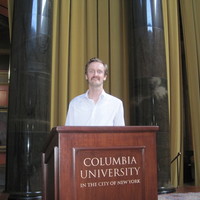

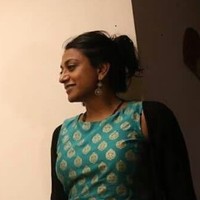

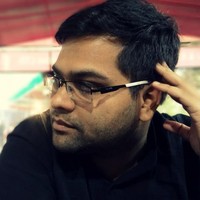
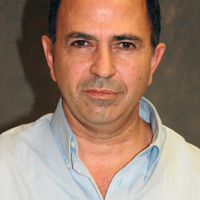
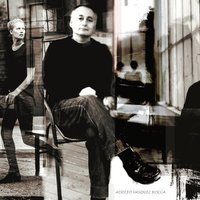


Uploads
Schulz/Forum 6 - Pojedyncze artykuły by Stanisław Rosiek
Still, the critic did not put Schulz under lock and key, and no one else did later.
Although the writer’s work has provoked hundreds of comments and interpretations, no one has found a key to open all the doors in his world, since he is always “elsewhere,” escaping his exegetes. That, however, should not discourage us from making new (private, idiosyncratic, and risky) attempts at interpretation. The reader will find some in the present issue. But there is also another way full of adventures – that of searches all over the world and archival research, which also promises success. The present issue includes an unpublished essay by Schulz on the works of the Jewish artist Maurycy (Ephraim Moses) Lilien, and a short review of an exhibition of Feliks Lachowicz. Besides, Schulz’s unknown pencil sketch, found on the underside of his well-knownsketch of a bookplate for Ella and Jakub Schulz, has been presented, as well as Schulz-the typographer. The introduction concludes with an appeal to visit Jerzy Ficowski’s archive. It certainly contains many unexplored traces and possibly a key to some door to Schulz’s world.
Schulz/Forum 1 – Pojedyncze teksty by Stanisław Rosiek
illustrations – drawings and photos – as well as portraits of authors, whose arrangement reveals the contemporary literary hierarchy.
Schulz/Forum 2 – Pojedyncze artykuły by Stanisław Rosiek
Schulz/Forum 3 – Pojedyncze artykuły by Stanisław Rosiek
Schulz/Forum 5 – Pojedyncze artykuły by Stanisław Rosiek
has not been published in an adequate form – there are only more successful reproductions of particular graphics. At any rate, the identity of The Booke has always been precarious and ambiguous. It has always been a work in motion – flickering, unstable, composed in various ways since particular graphics have appeared in different authorial configurations (files) each of which lead its own, independent life. Thus "The Booke of Idolatry" has its multiple history and no “hard” ontology. As a whole, it is not available.
Schulz/Forum 4 – Pojedyncze artykuły by Stanisław Rosiek
book should follow, but in his letters he keeps complaining on a writer’s block. The only way out is to publish something already written, and fortunately there is something in store. Thus Schulz begins to work on the texts penned in the 1920s. He must only, as he puts it, “choose, finish, edit, and rewrite” them. The manuscript of “A Second Autumn”
is a document of rewriting – in a way, the author is a parasite on his own work. Still, working on his old texts, Schulz believes that he is a traitor not only of himself, but also of the original inspiration. Once inspired, he must become a writer and becomes one, though he must change his method. A return to the innocence and disinterestedness of
the 1920s is impossible. Under the pressure of external circumstances, Schulz begins a new epoch in his writing. The lost "Messiah" was probably intended as its center. Some of Schulz’s essays from that period reveal a poetics that is different from his original one. That other, different poetics may be called a poetics of “making the myth real,” of a “biological semantics.” The manuscript of “A Second Autumn” demonstrates the decline of the former way of writing.
Papers by Stanisław Rosiek
Still, the critic did not put Schulz under lock and key, and no one else did later.
Although the writer’s work has provoked hundreds of comments and interpretations, no one has found a key to open all the doors in his world, since he is always “elsewhere,” escaping his exegetes. That, however, should not discourage us from making new (private, idiosyncratic, and risky) attempts at interpretation. The reader will find some in the present issue. But there is also another way full of adventures – that of searches all over the world and archival research, which also promises success. The present issue includes an unpublished essay by Schulz on the works of the Jewish artist Maurycy (Ephraim Moses) Lilien, and a short review of an exhibition of Feliks Lachowicz. Besides, Schulz’s unknown pencil sketch, found on the underside of his well-knownsketch of a bookplate for Ella and Jakub Schulz, has been presented, as well as Schulz-the typographer. The introduction concludes with an appeal to visit Jerzy Ficowski’s archive. It certainly contains many unexplored traces and possibly a key to some door to Schulz’s world.
illustrations – drawings and photos – as well as portraits of authors, whose arrangement reveals the contemporary literary hierarchy.
has not been published in an adequate form – there are only more successful reproductions of particular graphics. At any rate, the identity of The Booke has always been precarious and ambiguous. It has always been a work in motion – flickering, unstable, composed in various ways since particular graphics have appeared in different authorial configurations (files) each of which lead its own, independent life. Thus "The Booke of Idolatry" has its multiple history and no “hard” ontology. As a whole, it is not available.
book should follow, but in his letters he keeps complaining on a writer’s block. The only way out is to publish something already written, and fortunately there is something in store. Thus Schulz begins to work on the texts penned in the 1920s. He must only, as he puts it, “choose, finish, edit, and rewrite” them. The manuscript of “A Second Autumn”
is a document of rewriting – in a way, the author is a parasite on his own work. Still, working on his old texts, Schulz believes that he is a traitor not only of himself, but also of the original inspiration. Once inspired, he must become a writer and becomes one, though he must change his method. A return to the innocence and disinterestedness of
the 1920s is impossible. Under the pressure of external circumstances, Schulz begins a new epoch in his writing. The lost "Messiah" was probably intended as its center. Some of Schulz’s essays from that period reveal a poetics that is different from his original one. That other, different poetics may be called a poetics of “making the myth real,” of a “biological semantics.” The manuscript of “A Second Autumn” demonstrates the decline of the former way of writing.